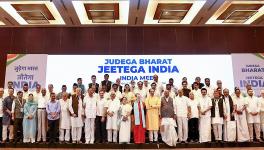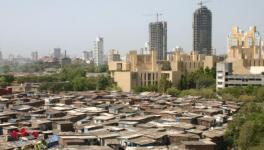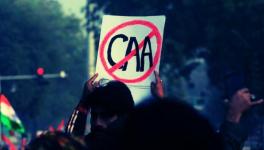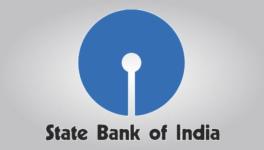Demonetisation and the Middle Class Disconnect
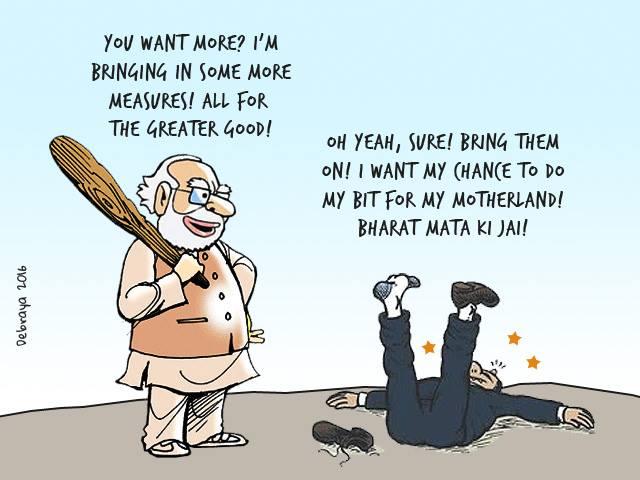
Image Courtesy: Debraya
A substantial section of the middle class – particularly the section that has benefitted from globalisation – has a schizophrenic view of demonetisation of the Rs. 500 and Rs. 1,000 notes. Since it is able to use credit or debit cards, its inconvenience has been relatively far less than of the bulk of the Indian people, who survive using cash. Therefore, the middle class possesses a smug sense of satisfaction that though we may be temporarily “inconvenienced”, the black money holders are really being punished.
Of course this can change quickly if the money they require in the beginning of the month is not available from the banks or the economy tanks. It is now being predicted with GDP growth coming down to even 0.5% in the second half of this financial year leading to significant job losses for the middle class as well.
But more relevant than the middle class’ view of demonetisation and its discomforts, is its complete disconnect from the rest of the people. The globalising middle class now lives in gated communities, works in business parks or commercial centres. They are no longer connected to industries and have also severed their links with rural India. It shops in malls or online. This is the secession of the middle class from the rest of India. It lives in a bubble, where it meets only people like itself. Of course they have maids that come to work in their homes, watchmen to guard their elite enclaves and a host of services provided by faceless, nameless people with whom they rarely interact.
Look at which sections of the people that making higher denomination notes illegal, has really hit. This is the informal economy or the cash economy that is estimated to be 40% of our GDP and 80% of our employment. At one stroke, Modi has virtually brought this sector of the economy to a grinding halt. From the rural sector to subzimandis, the economic activities have come down drastically. The Newsclick investigations in the subzimandis of Delhi show that the flow of vegetables has come down to 25% in Delhi alone. Agriculture is hit badly. The farmers are unable to sell their crops at market rates as there is little cash in the rural economy. They are being offered prices that are 15-30% lower, that too in old notes. They are forced to take fertilisers and seeds on credit, for which they will have to pay a hefty interest or to use much less fertilisers that will bring down their yield.
The industrial scenario is equally bad. The Aligarh lock making, Moradabad brassware,Ferozabad glassware, Agra and Kanpur leather industry, the granite industry in Ongole (Andhra) have all been hit badly. Garment and textile industries have also taken a massive hit. And there is no way of knowing when the money is going to flow back to the economy and things will come back to normal.
So why do we not have more anger? One reason is that the middle class is the one that sets the public agenda. They believe that such a huge blow to the economy could not be an unthinking exercise. They believe the myth that the government and the media is telling us – that these measures will somehow unearth black money. They may have criticism of the way things have been done – bank queues, very little cash in the ATM's, Rs. 2,000 notes that cannot be changed easily, and so on. But they support the big picture – this measure will eradicate black money, will move India from informal to a formal economy and therefore a better India. As long as the poor pay the price, they are willing to support the Modi government.
Without the middle class, the poor may feel the pinch, but are relatively voiceless. The organisation of the poor – the unions, kisan sabhas, landless labour – have weakened from the 60's and 70's when there were major land struggles. It is this weakening of the movements of the poor and the coopting of the big media that is driving the current “comfortable” narrative – things are slowly going to improve and we will all get a share of the black money that surfaces, even if it is not Rs. 15 lakhs as per the election jumla.
The illusion that Modi is fighting black money and the middle class disconnect, appears to have helped the BJP in the urban local body elections in Gujarat and Maharashtra. However, the worst for the people is yet to come, as the re-monetisation of the economy is a fraction of what has been withdrawn from circulation and economic activities in the informal sector shutting down.
If the government can remonetise the economy quickly and the economy starts moving again, some inventive maths can be worked to claim mythical benefits. Even if a small amount of money is transferred to Jan Dhan accounts, claiming it to be from the black money recovered, Modi may be able to ride out the economic storm he has created. This is what he is banking on.
In the short term, he believes that the loss of black money for BJP's key opponents in UP --Mayavati and Mulyam, while BJP's is intact, will help him in the elections there. The UP elections will be the immediate test for the Modi gamble, particularly among the rural voters.
The last two years have seen the highest growth of inequality ever – the top 1% has not only secured the entire increase in wealth, they have “redistributed” huge amounts from the rest 99% to themselves. The conditions of the bottom 10% have worsened, they are now in debt to the extent of Rs. 50,000 per family. The so-called demonetisation is nothing but another attack on the poor, a case of robbing the poor to help the exchequer.
The left and others need to focus on the big picture that money in cash is a small part of black money. The bulk of it is in tax havens outside the country; or in the form of land and gold. Modi's attack on black money is attacking petty cash holders, while letting the big fish off the hook. While people holding petty cash are being threatened daily, the rich are being helped further with huge loan write-offs from the banks. In the last three years, the loan write-offs for big business has been to the tune of Rs.1.8 lakh crore, the bulk of that occurring in the Modi rule of the last two years. This is the Modi vision – sock the poor while helping the rich. Demonetisation is another such attack on the poor.
Get the latest reports & analysis with people's perspective on Protests, movements & deep analytical videos, discussions of the current affairs in your Telegram app. Subscribe to NewsClick's Telegram channel & get Real-Time updates on stories, as they get published on our website.















